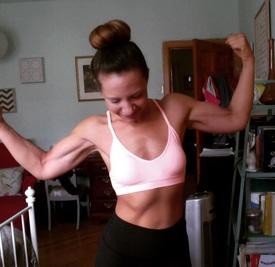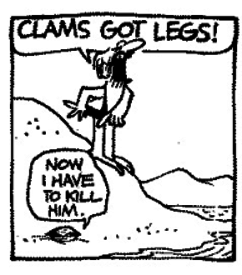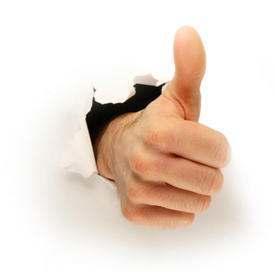Regardless of form/ weight....deadlifts cause pain
Options
pinggolfer96
Posts: 2,248 Member
it sucks cause I'm young and have proper form on my deadlift.....yet my back stiff hurts after every time I deadlift. I even do sumo squat as I'm tall and it's more comfortable. No matter how low I sink my hips, how straight my back is, how much I drive with my heels, my back is always in pain after for a long time. And I don't mean discomfort, I mean pain. Is there anyone else like this whose body just simply does not accept deadlifting lol. It sucks, but what are you alternatives or methods you've done to avoid this?
0
Replies
-
In for solid lifting advice.0
-
YES. Funny you made this because I'm dealing with this right now. I'm getting back into lifting after a while and my deadlifts aren't going well. I'm using proper form, yet the deadlifts mess up my back for days after I do them. I want to get back to 300+ bench, 400+ squat, and 500 deadlift, but my body isn't cooperating.
As of now, the way I'm combating my deadlift problems is by giving myself lots of rest between deadlift sessions and keeping my reps extremely low. And when I say 'low', I mean I do 1-3 total reps of deadlifts each session. I do a heavier weight each time I go to the gym. My back doesn't hurt anymore when I leave the gym, but I still feel a sensation in my lower back that makes me uncomfortable.
So anyway, the bottom line is I think you should limit your reps and give yourself more rest between deadlift sessions. Maybe on the days in between your deadlift sessions, you can do supplementary exercises that will help with your deadlift (ham/glute raises, etc).1 -
Deload to no pain then work up again
Get a trainer to triple check your form
I pulled something today on first set deadlifts and am in feck can't move pain even after ibuprofen ice and heat ..I'd swear my form was fine and it was at 60kg which should be an OK weight for me ..but I have to admit that I might have gone in too heavy for first set
Oh well live and learn4 -
My body doesn't like deadlifting either.
 My left SI joint is too mobile and pops out of place, which ultimately leads to low back pain. It can get achey during heavy deadlifts and squats, and once popped out altogether, so I was off my feet for weeks. I tried to deload and work up again, but always feel it giving around the same weight. It sucks when your muscles can take it, but your connective tissue can't!
My left SI joint is too mobile and pops out of place, which ultimately leads to low back pain. It can get achey during heavy deadlifts and squats, and once popped out altogether, so I was off my feet for weeks. I tried to deload and work up again, but always feel it giving around the same weight. It sucks when your muscles can take it, but your connective tissue can't!
My workarounds are basically the same as jasin's. I cut way down on volume, up on rest. I put all my effort into hip thrusts instead.1 -
Are you absolutely sure your form is correct? I second a deload then reload. I'm trying out some programming for my compounds right now in order to grease the groove and become more efficient at the lifts. Set your weight at 65-70% of your 1rm.
Say 275. Then add 5 pounds every session for 4 sessions. Followed by a reset of 15 pounds. Starting you out at 280. Then repeat. Often used in the conjugate method. So you know it works.
Ex.
1. 275x3
2. 280x3
3. 285x3
4. 290x3
5. 280x3
6. 285x3
and so on. It's really helped me with maintaining core stability while upping my weights. Working on doing the reload without a belt for as long as possible.1 -
My back doesn't seem to react as much when I do hex-bar (or trap bar?) deads.0
-
My experience is the opposite of the OP's. I was a passenger in an auto accident about 15 years ago (in which we struck a drunk driver that was dumb enough to make a U-turn on an interstate). I came out of that accident with a bunch of soft tissue damage and some scar tissue. I managed to rehab it using a cautious multi-year system of strength training along the lines of Westside Barbell (but starting out MUCH more mellow). At this point my back is no longer in the critical path of my health and fitness. Sure there are things I can't do, but I'm happy I can hang in there with the 20-year olds. I respect that somebody else might have completely different experience. I'm not sure I know enough to give anybody advice, but I hope you find a way to maintain your health. In my opinion, core strength is critical.1
-
Deload to no pain then work up again
Get a trainer to triple check your form
I pulled something today on first set deadlifts and am in feck can't move pain even after ibuprofen ice and heat ..I'd swear my form was fine and it was at 60kg which should be an OK weight for me ..but I have to admit that I might have gone in too heavy for first set
Oh well live and learn
and go see a doctor as well.0 -
ttippie2000 wrote: »My experience is the opposite of the OP's. I was a passenger in an auto accident about 15 years ago (in which we struck a drunk driver that was dumb enough to make a U-turn on an interstate). I came out of that accident with a bunch of soft tissue damage and some scar tissue. I managed to rehab it using a cautious multi-year system of strength training along the lines of Westside Barbell (but starting out MUCH more mellow). At this point my back is no longer in the critical path of my health and fitness. Sure there are things I can't do, but I'm happy I can hang in there with the 20-year olds. I respect that somebody else might have completely different experience. I'm not sure I know enough to give anybody advice, but I hope you find a way to maintain your health. In my opinion, core strength is critical.
This is really inspiring! My problems come from an accident too. I was hit by a car as a pedestrian and have a rod in my left leg. The soft tissues around my hip got all stretched out and don't stabilize the joint as well anymore. What sort of professional did you go to for your strength program/rehab? The docs I've seen just tell me to stop trying to lift more. 0
0 -
My chiro. took an x-ray and discovered that I have an extra vertebra, so a little lower back pain is usually something I expect when I do the deadlift. It's a good reminder to keep my back position as neutral as possible and pull in my stomach when I do the lift.1
-
Are you lifting with a belt? Or at least pushing out hard with the abs and holding your valsalva hard? If the abs and air aren't doing their part, your back is going to have to carry way too much of the load.2
-
pinggolfer96 wrote: »it sucks cause I'm young and have proper form on my deadlift.....yet my back stiff hurts after every time I deadlift. I even do sumo squat as I'm tall and it's more comfortable. No matter how low I sink my hips, how straight my back is, how much I drive with my heels, my back is always in pain after for a long time. And I don't mean discomfort, I mean pain. Is there anyone else like this whose body just simply does not accept deadlifting lol. It sucks, but what are you alternatives or methods you've done to avoid this?
I injured my lower severely a few years ago doing deadlifts with bad form. Didnt go near them for years afterwards. In the last year & half I have gone back to them but after attempting normal deadlifts a good few times and always ending up with severe lower back pain, even with my form being checked by my PT, I've given up doing normal deadlifts. Life is too short and I would rather have a healthy pain free lower back. I can do deadlifts with the hex bar and while I know that is not a proper deadlift, I don't get the same level of pain in the lower back using it. Try doing them with the hex bar @pinggolfer961 -
This content has been removed.
-
Have to ask - How Many people have you had look at form? Whatever the number, ask some more, make sure they are properly Knowledgable.
Are you Sure it's not Mobility related? I only ask down to your comment of "I even squat sumo, as I'm tall and It's more comfortable".... Just wondering as I've seen guys 6 foot 4 squat High bar, A2G with no problems..
Advice-wise, I'd Echo the reload method. Reload at 50-60% of Max, Have form stripped down, re-analysed, and go from there0 -
Post a video of you deadlifting.1
-
ttippie2000 wrote: »What sort of professional did you go to for your strength program/rehab? The docs I've seen just tell me to stop trying to lift more.

I've gotten hooked up with a Doctor of Physical Therapy (20+ years of experience) who is also a Certified Strength and Conditioning Specialist, works with pro and college athlete. I've worked with him for a couple years (3-4 visits a year, it's about a 3 hour one way drive to his facility) on specifically shoulder and general mobility issues.
See if you can find somebody like that. He's been exceptional in telling me what to do and not do.2 -
Video?
I'm curious about how low you "sink your hips", as you mentioned. You pulling sumo, right? You said squat in your OP but I think it was a typo.0 -
arditarose wrote: »Video?
I'm curious about how low you "sink your hips", as you mentioned. You pulling sumo, right? You said squat in your OP but I think it was a typo.
Yeah that was a typo. I meant to say deadlift in sumo. I'll try and get a vid if I can
0 -
i know nothing. that's the initial disclaimer.
but i'm wondering: if you're that tall, have you tried chunking out the whole range of motion into isolated pieces to see if there's a specific segment of it that's more of a trigger for you? you could do rack pulls from above the knees, for instance, and if that doesn't hurt drop the rack a few inches and do them again.3 -
I notice this a lot in my clients and even experience low back pain myself on 'leg' days. The fact of the matter is that dead lifting puts too much stress on the lumbo-pelvic region. If you are training for competition, there really is no alternative training methods to increase your deadlift RM. If you are training for health or body composition, I have a few suggestions. IMO using a hex bar for deadlifting can reduce the stress on the low back. The weight is more evenly distributed in front and in back, whereas a traditional barbell deadlift has all the weight in the front. An alternative exercise you can implement in your program is single leg RDLs. In no way does this exercise have the same muscle recruitment as the traditional deadlift, however one leg is kept in line with the trunk and spine reducing the amount of pelvic tilt. On a similar note, I have clients ranging from high school athletes to menopausal women -- I have all of them do unilateral leg presses as opposed to bilateral. With one foot planted on the floor and the other on the leg press, it greatly reduces posterior pelvic tilt. When the pelvis is tilted backwards it can impinge parts of the lumbar spine, especially when loaded. One last recommendation is to properly warm up. 5-10 minutes on the bike along with some dynamic movements is sufficient.1
-
I too would like to see a video. I used to have similar issues with the deadlift and it turned out that my form was crap. It looked pretty decent at a glance (even on video) but a close analysis of technique quickly cured me of any problems.2
-
I firmly believe that back pain doing deadlifts is primarily caused by bad form. You can just Goggle "deadlift and back pain" for numerous articles on this point.
While stress is definitely placed on the lower back, if the back is fixed and the initial pull to beyond the knees is done from the hips and does not involve the back, there shouldn't be so much stress placed on the lower back to straighten up to cause pain or injury there. If there is it's caused by bad form and/or too much weight or perhaps by a chronic physical condition aggravated by doing conventional deadlifts.
An alternative, already mentioned, is to try doing trap bar lifts, which are much less stressful on the lower back because you do a trap bar lift w/you back in an essentially vertical starting position. If you can do trap bar deadlifts w/o pain, then there must be something wrong w/your form and/or back that causes back pain when doing conventional DLs.
The way to test this theory is to try doing some trap bar deadlifts to see if you stii experience any back pain or not.0 -
VIdeoing your form - like others have said - would be great so you (and we) can truly see your form.
Also, where is the bar when you lift? Meaning, is it drifting out in front of you? I think I've finally broken it, but I had a habit of letting the bar drift out when I lifted. Basically, the closer it is to you, the less strain you're putting on your back compared to when it drifts out. I've tweaked my back a couple of times deadlifting and both times I knew when I done it what caused it - bar position.
0 -
OP I know you're not a noob a lifting or anything but I'm just curious about how low you say you sink your hips to sumo. If you're too low, your hips could be rising early and that might cause some back pain.0
-
Post a video of you deadlifting.I too would like to see a video. I used to have similar issues with the deadlift and it turned out that my form was crap. It looked pretty decent at a glance (even on video) but a close analysis of technique quickly cured me of any problems.VIdeoing your form - like others have said - would be great so you (and we) can truly see your form.
Also, where is the bar when you lift? Meaning, is it drifting out in front of you? I think I've finally broken it, but I had a habit of letting the bar drift out when I lifted. Basically, the closer it is to you, the less strain you're putting on your back compared to when it drifts out. I've tweaked my back a couple of times deadlifting and both times I knew when I done it what caused it - bar position.
Here is a quick vid I got with Pretty light weight. Didn't hurt too much today, but I still felt a little discomfort https://youtu.be/PdvUK_NhpTk 0
https://youtu.be/PdvUK_NhpTk 0 -
So, here's something I've been doing, because let's face it: deadlift is hard on the CNS. It just is. My lower back always has pain after a heavy deadlift session. But by the time I walk out of the gym, my back feels like a million bucks.
What I've started doing, for the past month or more, is going immediately to front-squats after my deadlift session. The workload of the front squat, the more erect posture, and the training of the core, really help my back out. When I'm done with my front squat session, if feels like I've had a back massage. All the pain from my deadlift session is gone. Maybe it's just me; but this has been working for me for over a month now.
One other thing: make sure you're doing a lot of lateral strength exercises to make your hips strong. I didn't do anything like that my first few years lifting, and it led to a lot of pain and eventually hip bursitis, which put the kibosh on my lifting for over 6 months. You don't want that. Strong hips help in every way. Do lateral exercises, band exercises, side leg lifts, etc. And work your core man (one of those things that front squats are great for). It will all add up over time.2 -
pinggolfer96 wrote: »Post a video of you deadlifting.I too would like to see a video. I used to have similar issues with the deadlift and it turned out that my form was crap. It looked pretty decent at a glance (even on video) but a close analysis of technique quickly cured me of any problems.VIdeoing your form - like others have said - would be great so you (and we) can truly see your form.
Also, where is the bar when you lift? Meaning, is it drifting out in front of you? I think I've finally broken it, but I had a habit of letting the bar drift out when I lifted. Basically, the closer it is to you, the less strain you're putting on your back compared to when it drifts out. I've tweaked my back a couple of times deadlifting and both times I knew when I done it what caused it - bar position.
Here is a quick vid I got with Pretty light weight. Didn't hurt too much today, but I still felt a little discomfort https://youtu.be/PdvUK_NhpTk
https://youtu.be/PdvUK_NhpTk
It's not terrible. It would be good to see you at a higher percentage of your max - like 75%+
1. The bar is too far from your shins
2. Your weight is on your toes
3. The bar path is not vertical
4. Too much knee bend
Basically, everything is a result of a poor set up. When standing straight up, the bar should only be 2-4 inches from your shin (directly over your arches).
That's everything I could see from that angle.3 -
pinggolfer96 wrote: »it sucks cause I'm young and have proper form on my deadlift.....yet my back stiff hurts after every time I deadlift. I even do sumo squat as I'm tall and it's more comfortable. No matter how low I sink my hips, how straight my back is, how much I drive with my heels, my back is always in pain after for a long time. And I don't mean discomfort, I mean pain. Is there anyone else like this whose body just simply does not accept deadlifting lol. It sucks, but what are you alternatives or methods you've done to avoid this?
Does it cause pain while you're DL-ing? Or just a muscular ache the next day?0 -
In.
After several bouts with injury, I decided a few years ago that deadlifts just aren't worth it. I focus more on squats and other exercises to strengthen my posterior chain (KB swings, etc.).0 -
In addition to Jon's observations...
5. Notice how your hips rise when you initiate the lift. Don't do that - simply pivot around the hip joint.
6. Put the bar down after each rep and release your grip. Look down to check proper bar distance from shins and do the next rep.
7. Avoid flat-sided plates, because they won't land right when you do #6.
8. Don't watch yourself in the mirror. 4
4
This discussion has been closed.
Categories
- All Categories
- 1.4M Health, Wellness and Goals
- 396.9K Introduce Yourself
- 44.2K Getting Started
- 260.9K Health and Weight Loss
- 176.3K Food and Nutrition
- 47.6K Recipes
- 232.8K Fitness and Exercise
- 452 Sleep, Mindfulness and Overall Wellness
- 6.5K Goal: Maintaining Weight
- 8.7K Goal: Gaining Weight and Body Building
- 153.3K Motivation and Support
- 8.3K Challenges
- 1.3K Debate Club
- 96.5K Chit-Chat
- 2.6K Fun and Games
- 4.5K MyFitnessPal Information
- 16 News and Announcements
- 18 MyFitnessPal Academy
- 1.4K Feature Suggestions and Ideas
- 3.1K MyFitnessPal Tech Support Questions



















